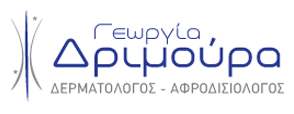Moles which require a more extended analysis are photographed separately with the aid of digital technology combined with a special dermatoscope (a microscope of the skin) . The Dermatoscope allows us to examine the particular structural characteristics of a mole which are not visible to the naked eye. Thus, diagnostic precision is highly enhanced.
All recordings are stored in a computer. This enhances comparison of the old to recent depictions and possible alterations in size, colour, shape, texture and all relevant can be performed and further diagnostic procedure can be launched for immediate surgical removal.
If a mole presents one of the following signs, according to the evaluation code, it should be immediately examined by a dermatologist and enter diagnostic procedure:
– Changes in colour (darker or multi-colouring such as blue, red, purple, white, pink or grey)
– Asymmetry with dispersion of corners
– Increase in size or thickness
– Changes in the perimeter of the mole (e.g. becoming red, swelling, ulcers and hemorrhaging without any apparent cause)
– Itching or any other sensation
– Hemorrhaging

